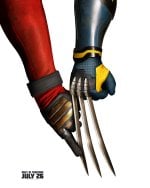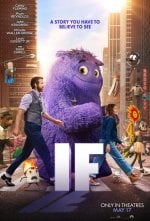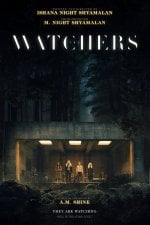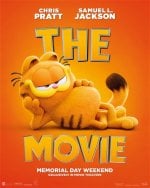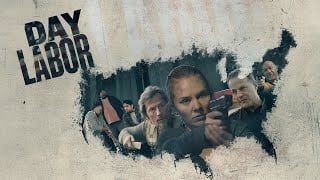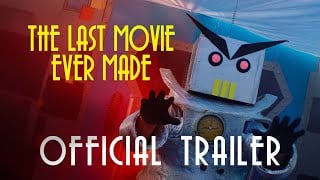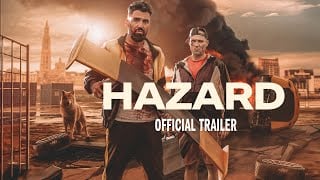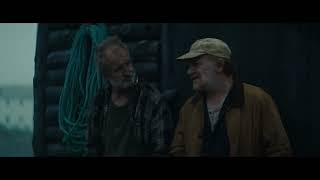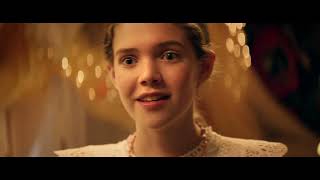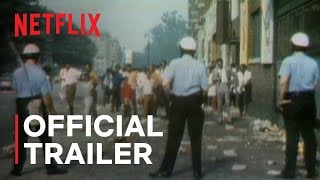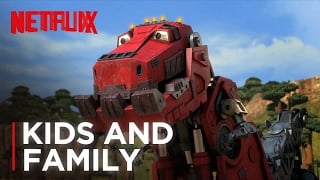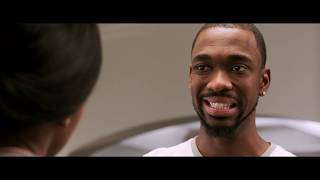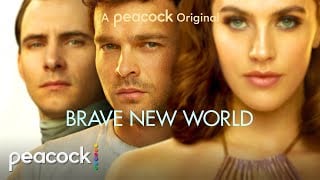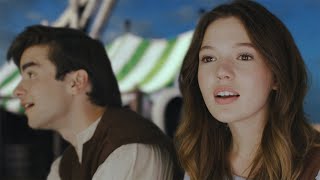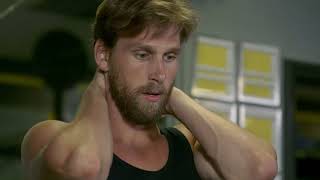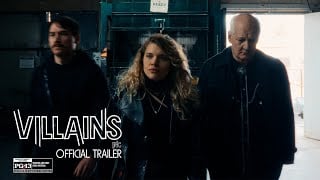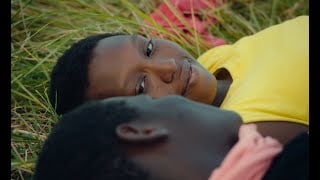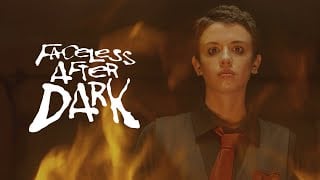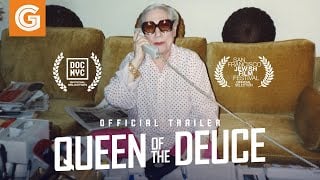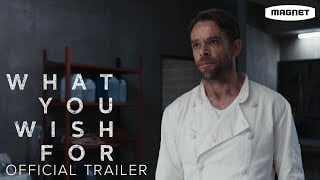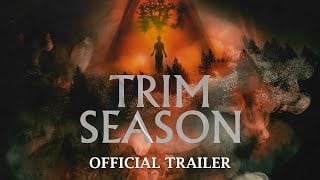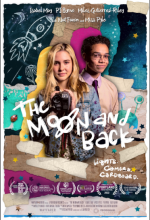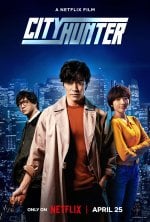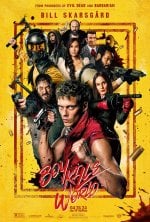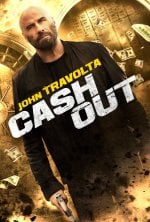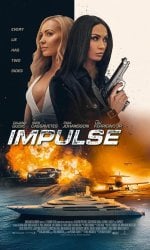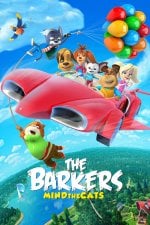Latest Movie Trailers & Videos
Blink Twice
Official Trailer
Day Labor
Official Trailer
The Last Movie Ever Made
Official Trailer
Invisible Nation
Official Trailer
Hazard
Official Trailer
Sweetland
Official Trailer
Sira
Official Trailer
School of Magical Animals 2
Official Trailer
Power
Official Trailer
Dinotrux (series)
Official Trailer
2 Minutes of Fame
Official Trailer
Brave New World (series)
Official Trailer
Princess Halle and the Jester
Official Trailer
Final Heat
Official Trailer
Villains Inc.
Official Trailer
Americana
Sneak Peek Clip
Ruby's Choice
Official Trailer
Banel & Adama
Official Trailer
Coma
Official Trailer
Faceless After Dark
Official Trailer
For Sale
Official Trailer
Queen of the Deuce
Official Trailer
What You Wish For
Official Trailer
Trim Season
Official Trailer
New Movies Coming Out This Week
Tiger
Disney+
Downtown Owl
VOD / Digital
The Moon And Back
VOD / Digital
Something You Said Last...
Limited
City Hunter
Netflix
Challengers
Nationwide
Unsung Hero
Nationwide
Boy Kills World
Limited
Nowhere Special
Limited
Knuckles (limited serie...
Paramount+
Cash Out
Limited
Cinderella's Revenge
Limited
Breathe
Limited
The Feeling That the Ti...
Limited
Infested
Shudder
Bloodline Killer
VOD / Digital
Dancing Village: The Cu...
Limited
Humane
Limited
The King Tide
Limited
Break
Limited
Terrestrial Verses
Limited
Impulse
VOD / Digital
The Barkers: Mind the C...
VOD / Digital
My Divorce Party
VOD / Digital
Star Wars: Episode III - Revenge of the Sith Movie Review
originally posted many years ago
And so after a few bumps in the road, Star Wars finally comes full-circle. George Lucas' epic six-part saga, which many feel should've stopped at three, has had its ups and downs since 1977. A New Hope became a cultural landmark and forever changed the face of cinema. The Empire Strikes Back not only met the standards of a masterpiece—it surpassed them. Return of the Jedi brought the first trilogy to a satisfying close. In 1999 Lucas' prequel trilogy got off to a sputtered start with the widely reviled Phantom Menace, and, quite frankly, the less said about Attack of the Clones, the better. But now we are at a crossroad, where the disappointing prequels end and the legend of Star Wars truly begins. The question is, can Episode III - Revenge of the Sith recapture the magic that made Star Wars what it is, or is it doomed to lie with Jar Jar Binks forever? The answer, I'm happy to say for all who waited so long, is that Revenge of the Sith is a magical, moving cinematic experience that breaks free from the rest of its trilogy and barrels headlong into the Star Wars we remember. This is what you've all been waiting for. Star Wars has returned to form.
That Revenge of the Sith is better than anything in The Phantom Menace or Attack of the Clones goes without saying. Those movies were Star Wars imitators—this is the real thing, a prequel finally worthy of standing alongside George Lucas' original masterpieces. This one feels different than the other two—Revenge of the Sith does not waste time on useless characters or plod through Galactic Senate meetings and interstellar politics. Revenge of the Sith looks to the stars and lassoes the breakneck adventure of Episode IV, that distinct, whimsical "space opera" quality. From the very first frame, Episode III exudes an epic energy that no one but Peter Jackson has been able to duplicate. By the last frame, you know you've seen one of the best pictures of the year.
The greatest thing about Revenge of the Sith is its tone. Whereas Episode I & II felt too cheery and childish, Episode III is by far the darkest Star Wars film ever made. This, of course, was bound to happen. Fans know the events which need to transpire between Episodes II and IV—the Jedi must be destroyed, the Empire must rise, and Anakin Skywalker (Hayden Christensen) must become Darth Vader. The story is depressing by nature, but the way Lucas handles it is incredible. Revenge of the Sith is a constant emotional crescendo; as Anakin spirals from good intentions into the shadow of the Dark Side, the movie spirals with him. There are scenes in Revenge of the Sith that tug at your heart in a way that few movies of its kind ever do. Some of them even rival "Luke, I am your father," in terms of emotional impact. One sequence, where Anakin returns to the Jedi Council room after pledging his allegiance to Darth Sidious, is more saddening than anything Star Wars has ever seen. When Anakin pulls out his light saber, and you see who his opponents are, you will gasp at just how far Lucas has gone with his sinister third act.
Yes, the film is moody, but somehow it brings us back to the swashbuckling roots of Star Wars, and that's exciting. Because the material is so passionate this time around, with so many conflicting emotions and climactic confrontations, Lucas' storytelling has vastly improved. Anakin's tragic fall almost feels like a legend, like it belongs in some lost mythology. The archetypes in this movie, borrowed heavily from Greek tragedy, achieve a resonance that makes Revenge of the Sith seem larger and even more ancient than it really is. It's impossible to say how Lucas does it—we didn't know in 1977, and we still don't know today. But, like all the other great Star Wars movies, Revenge of the Sith does not connect with us as a story. It clicks somewhere deeper in our minds, where the fundamental concepts of good and evil are locked away.
As the film opens, the Clone Wars, which began in Episode II, are still raging. Count Dooku (Christopher Lee) is still leader of the Separatist movement, and the Galactic Senate is till under the rule of Supreme Chancellor Palpatine (Ian McDiarmid), whose hidden identity has yet to be revealed. When Palpatine is kidnapped by General Grievous (voiced by Matthew Wood), leader of the Separatist droid army, the Jedi dispatch Obi-Wan Kenobi (Ewan McGregor) and Anakin to rescue the Chancellor and destroy Grievous. The rescue is a success, but Grievous escapes, and Palpatine refuses to give up his powers as Chancellor until Grievous is captured. As Jedi masters Mace Windu (Samuel L. Jackson) and Yoda (Frank Oz) grow more suspicious of Palpatine, the Chancellor starts to woo Anakin with the opportunity to learn powers that no Jedi possesses. So begins Anakin's descent into lies, corruption and the Dark Side.
George Lucas' dialogue has never been the brightest star in the Star Wars universe, particularly in these prequels. In Episode II, the love story between Anakin and Padme (Natalie Portman) was so laughable that it ruined the entire movie—even the unromantic parts. The cooing in Revenge of the Sith isn't much more tolerable—near the beginning, Anakin and Padme even have an "I love you more/ No, I love you more!" spat, which I promise will give you the giggles. There are lines later, given to Obi-Wan, which are equally distressing. But what's odd and kind of relieving about this script, as opposed to the others, is that the dialogue doesn't really tell the story. It's the visuals and the sweeping emotions that pilot Revenge of the Sith—dialogue is only used when it needs to be.
Speaking of visuals, it's astounding how far Lucas' Industrial Light and Magic has come since 1977. The special effects in Revenge of the Sith are absolutely breathtaking, blending in seamlessly with the real props and actors. The CGI is so convincing that, for the first time ever in a movie, I never once said to myself, "That's CGI." It's impossible to tell where reality ends and pixels begin in Revenge of the Sith. This movie contains no rough edges or obvious flaws—the artistic envisioning of Revenge of the Sith, which, in true George Lucas fashion, tickles the very recesses our imaginations, is done great justice by maybe the greatest special effects ever captured on film.
See, I trust George Lucas with special effects, because I know that he never creates an effect unless it serves the story or his universe. In Revenge of the Sith, every little digital creation adds to the feel of the film, rather than distract from it, which is an all too common pitfall of CGI-laden movies. The entire visual tapestry of Revenge of the Sith works in service to the unforgettable world Lucas has made. More than ever before, this Star Wars film is alive with imagination.
With masterful effects artists ready to do his bidding, Lucas can set his stage for whatever extravagant action sequences he likes, and, this being the climactic chapter, Lucas makes sure that the excitement reaches the breaking point. There is a lot of action in this movie—maybe a half dozen light saber battles, a few aerial dogfights, and plenty of Stormtrooper action. The light saber duels are the true stars of this film, as they are more frequent and more furious than anything in Phantom Menace or Attack of the Clones. The light sabers really woosh in the scene where Obi-Wan faces General Grievous (who spins four of them like some twisted kitchen appliance), and in the important duel of Darth Sidious vs. Mace Windu. I heard a complaint about the thrilling saber battle in The Phantom Menace, that it felt to acrobatic and not enough like a true fight. No one can say that about any of the duels in Revenge of the Sith, which are fought with such anger and fury that the audience feels the weight behind every blow. The Jedi aren't just stretching their legs—they're really fighting for something this time.
Of course, the main attraction is the inevitable duel between Obi-Wan and Anakin. Because we've all seen the rematch in Episode IV, we pretty much know the outcome of round one, although exactly what transpires is anyone's guess. The fight, which is intercut with another light saber square-off between Darth Sidious and Yoda, is the most brilliant scene in the whole movie, and I cannot do it justice in words. Both sequences are chilling in the kind of electricity they achieve, and they remind us what truly great action scenes can accomplish.
Hm...I realize now that I haven't said too much about the birth of Darth Vader, which is really what this movie is all about. Naturally, the moment Anakin is encased in that shiny black costume, and the robotic scowl of a mask is lowered onto (what's left of) his face, and the inimitable hollow breathing hits the surround sound, it's a moment of triumph for the movie and for our nostalgia. But, to George Lucas' eternal credit, the first moments of Darth Vader's existence are not what we would expect from the cinema's greatest villain. Vader's first steps are awkward, as if he's not used to his new form, and when we hear James Earl Jones' voice for the first time, it is not a mechanical laugh, but a sad question to his master. It is tinged with such tragedy that we aren't moved to cheer for our favorite villain, but lament that he exists. I saw Revenge of the Sith in the greatest theater in Washington, the Uptown, where crowds are always alive and cheering—an Uptown crowd lives for moments like Darth Vader's introduction. But when the time came, and I listened for the reaction, there were no cheers—only silence, the deepest I have ever heard in a movie theater.
I credit the masterful tragedy of Anakin becoming Darth Vader to Lucas' gift as a storyteller, and certainly not Hayden Christensen's abilities as an actor. Christensen remains as stiff and unmoved as he was in Episode II, although he is not so bad as to throw the whole film off. However, aside from Christensen, the acting in Episode III is pretty impressive—by Star Wars standards. Ewan McGregor looks and acts so much like Alec Guinness that it's almost scary, and Natalie Portman, who has grown so much as a performer in this trilogy, is incredibly sympathetic as a woman who loses a husband to evil. Ian McDiarmid treats us to some delicious over-acting as Darth Sidious, Samuel L. Jackson has some valiant moments, and R2D2 is more inventive than we've ever seen him. But the best performance belongs to Frank Oz, who plays Yoda as the hero we always expected he was. (It's also interesting to note that, even though Yoda is entirely CGI in Revenge of the Sith, the animators seem to give him the slightly awkward, twitchy qualities of the rubber puppet used in Episodes I, V and VI. It's really a brilliant piece of animation.)
I don't think John Williams' musical score has ever sounded this good. Themes from all of the movies fit into Revenge of the Sith's musical arrangement, but as the story grows darker, Williams' matches them to brand new pieces of score, which are among the prolific composer's best work. Music has always been an important part of the Star Wars experience, and this film is certainly no exception.
Perhaps the greatest compliment that I can give Revenge of the Sith is that, as the last piece of the puzzle, it makes the other five episodes look even better than before. Revenge of the Sith does a remarkable job of linking all six movies together, so that each film (yes, even Attack of the Clones) feels like it plays an important part in this sprawling, beautiful story. Star Wars is not a series of chapters, we realize as the credits to Episode III roll, but one comprehensive lore, where themes echo, history repeats itself, and the flaws of man find redemption in the end. Just as the Sith rises, so they shall fall, just as a father is seduced by evil, so a son will restore goodness to the world. And just as a generation fell in love with Star Wars, so other generations will continue to marvel at its vast, wondrous universe, and like that naive young farm boy who stood on a hill of a strange planet and gazed into the double sunset, we will still look to the stars and dream of that incomparable feeling of "a long time ago, in a galaxy far, far away.".
That Revenge of the Sith is better than anything in The Phantom Menace or Attack of the Clones goes without saying. Those movies were Star Wars imitators—this is the real thing, a prequel finally worthy of standing alongside George Lucas' original masterpieces. This one feels different than the other two—Revenge of the Sith does not waste time on useless characters or plod through Galactic Senate meetings and interstellar politics. Revenge of the Sith looks to the stars and lassoes the breakneck adventure of Episode IV, that distinct, whimsical "space opera" quality. From the very first frame, Episode III exudes an epic energy that no one but Peter Jackson has been able to duplicate. By the last frame, you know you've seen one of the best pictures of the year.
The greatest thing about Revenge of the Sith is its tone. Whereas Episode I & II felt too cheery and childish, Episode III is by far the darkest Star Wars film ever made. This, of course, was bound to happen. Fans know the events which need to transpire between Episodes II and IV—the Jedi must be destroyed, the Empire must rise, and Anakin Skywalker (Hayden Christensen) must become Darth Vader. The story is depressing by nature, but the way Lucas handles it is incredible. Revenge of the Sith is a constant emotional crescendo; as Anakin spirals from good intentions into the shadow of the Dark Side, the movie spirals with him. There are scenes in Revenge of the Sith that tug at your heart in a way that few movies of its kind ever do. Some of them even rival "Luke, I am your father," in terms of emotional impact. One sequence, where Anakin returns to the Jedi Council room after pledging his allegiance to Darth Sidious, is more saddening than anything Star Wars has ever seen. When Anakin pulls out his light saber, and you see who his opponents are, you will gasp at just how far Lucas has gone with his sinister third act.
Yes, the film is moody, but somehow it brings us back to the swashbuckling roots of Star Wars, and that's exciting. Because the material is so passionate this time around, with so many conflicting emotions and climactic confrontations, Lucas' storytelling has vastly improved. Anakin's tragic fall almost feels like a legend, like it belongs in some lost mythology. The archetypes in this movie, borrowed heavily from Greek tragedy, achieve a resonance that makes Revenge of the Sith seem larger and even more ancient than it really is. It's impossible to say how Lucas does it—we didn't know in 1977, and we still don't know today. But, like all the other great Star Wars movies, Revenge of the Sith does not connect with us as a story. It clicks somewhere deeper in our minds, where the fundamental concepts of good and evil are locked away.
As the film opens, the Clone Wars, which began in Episode II, are still raging. Count Dooku (Christopher Lee) is still leader of the Separatist movement, and the Galactic Senate is till under the rule of Supreme Chancellor Palpatine (Ian McDiarmid), whose hidden identity has yet to be revealed. When Palpatine is kidnapped by General Grievous (voiced by Matthew Wood), leader of the Separatist droid army, the Jedi dispatch Obi-Wan Kenobi (Ewan McGregor) and Anakin to rescue the Chancellor and destroy Grievous. The rescue is a success, but Grievous escapes, and Palpatine refuses to give up his powers as Chancellor until Grievous is captured. As Jedi masters Mace Windu (Samuel L. Jackson) and Yoda (Frank Oz) grow more suspicious of Palpatine, the Chancellor starts to woo Anakin with the opportunity to learn powers that no Jedi possesses. So begins Anakin's descent into lies, corruption and the Dark Side.
George Lucas' dialogue has never been the brightest star in the Star Wars universe, particularly in these prequels. In Episode II, the love story between Anakin and Padme (Natalie Portman) was so laughable that it ruined the entire movie—even the unromantic parts. The cooing in Revenge of the Sith isn't much more tolerable—near the beginning, Anakin and Padme even have an "I love you more/ No, I love you more!" spat, which I promise will give you the giggles. There are lines later, given to Obi-Wan, which are equally distressing. But what's odd and kind of relieving about this script, as opposed to the others, is that the dialogue doesn't really tell the story. It's the visuals and the sweeping emotions that pilot Revenge of the Sith—dialogue is only used when it needs to be.
Speaking of visuals, it's astounding how far Lucas' Industrial Light and Magic has come since 1977. The special effects in Revenge of the Sith are absolutely breathtaking, blending in seamlessly with the real props and actors. The CGI is so convincing that, for the first time ever in a movie, I never once said to myself, "That's CGI." It's impossible to tell where reality ends and pixels begin in Revenge of the Sith. This movie contains no rough edges or obvious flaws—the artistic envisioning of Revenge of the Sith, which, in true George Lucas fashion, tickles the very recesses our imaginations, is done great justice by maybe the greatest special effects ever captured on film.
See, I trust George Lucas with special effects, because I know that he never creates an effect unless it serves the story or his universe. In Revenge of the Sith, every little digital creation adds to the feel of the film, rather than distract from it, which is an all too common pitfall of CGI-laden movies. The entire visual tapestry of Revenge of the Sith works in service to the unforgettable world Lucas has made. More than ever before, this Star Wars film is alive with imagination.
With masterful effects artists ready to do his bidding, Lucas can set his stage for whatever extravagant action sequences he likes, and, this being the climactic chapter, Lucas makes sure that the excitement reaches the breaking point. There is a lot of action in this movie—maybe a half dozen light saber battles, a few aerial dogfights, and plenty of Stormtrooper action. The light saber duels are the true stars of this film, as they are more frequent and more furious than anything in Phantom Menace or Attack of the Clones. The light sabers really woosh in the scene where Obi-Wan faces General Grievous (who spins four of them like some twisted kitchen appliance), and in the important duel of Darth Sidious vs. Mace Windu. I heard a complaint about the thrilling saber battle in The Phantom Menace, that it felt to acrobatic and not enough like a true fight. No one can say that about any of the duels in Revenge of the Sith, which are fought with such anger and fury that the audience feels the weight behind every blow. The Jedi aren't just stretching their legs—they're really fighting for something this time.
Of course, the main attraction is the inevitable duel between Obi-Wan and Anakin. Because we've all seen the rematch in Episode IV, we pretty much know the outcome of round one, although exactly what transpires is anyone's guess. The fight, which is intercut with another light saber square-off between Darth Sidious and Yoda, is the most brilliant scene in the whole movie, and I cannot do it justice in words. Both sequences are chilling in the kind of electricity they achieve, and they remind us what truly great action scenes can accomplish.
Hm...I realize now that I haven't said too much about the birth of Darth Vader, which is really what this movie is all about. Naturally, the moment Anakin is encased in that shiny black costume, and the robotic scowl of a mask is lowered onto (what's left of) his face, and the inimitable hollow breathing hits the surround sound, it's a moment of triumph for the movie and for our nostalgia. But, to George Lucas' eternal credit, the first moments of Darth Vader's existence are not what we would expect from the cinema's greatest villain. Vader's first steps are awkward, as if he's not used to his new form, and when we hear James Earl Jones' voice for the first time, it is not a mechanical laugh, but a sad question to his master. It is tinged with such tragedy that we aren't moved to cheer for our favorite villain, but lament that he exists. I saw Revenge of the Sith in the greatest theater in Washington, the Uptown, where crowds are always alive and cheering—an Uptown crowd lives for moments like Darth Vader's introduction. But when the time came, and I listened for the reaction, there were no cheers—only silence, the deepest I have ever heard in a movie theater.
I credit the masterful tragedy of Anakin becoming Darth Vader to Lucas' gift as a storyteller, and certainly not Hayden Christensen's abilities as an actor. Christensen remains as stiff and unmoved as he was in Episode II, although he is not so bad as to throw the whole film off. However, aside from Christensen, the acting in Episode III is pretty impressive—by Star Wars standards. Ewan McGregor looks and acts so much like Alec Guinness that it's almost scary, and Natalie Portman, who has grown so much as a performer in this trilogy, is incredibly sympathetic as a woman who loses a husband to evil. Ian McDiarmid treats us to some delicious over-acting as Darth Sidious, Samuel L. Jackson has some valiant moments, and R2D2 is more inventive than we've ever seen him. But the best performance belongs to Frank Oz, who plays Yoda as the hero we always expected he was. (It's also interesting to note that, even though Yoda is entirely CGI in Revenge of the Sith, the animators seem to give him the slightly awkward, twitchy qualities of the rubber puppet used in Episodes I, V and VI. It's really a brilliant piece of animation.)
I don't think John Williams' musical score has ever sounded this good. Themes from all of the movies fit into Revenge of the Sith's musical arrangement, but as the story grows darker, Williams' matches them to brand new pieces of score, which are among the prolific composer's best work. Music has always been an important part of the Star Wars experience, and this film is certainly no exception.
Perhaps the greatest compliment that I can give Revenge of the Sith is that, as the last piece of the puzzle, it makes the other five episodes look even better than before. Revenge of the Sith does a remarkable job of linking all six movies together, so that each film (yes, even Attack of the Clones) feels like it plays an important part in this sprawling, beautiful story. Star Wars is not a series of chapters, we realize as the credits to Episode III roll, but one comprehensive lore, where themes echo, history repeats itself, and the flaws of man find redemption in the end. Just as the Sith rises, so they shall fall, just as a father is seduced by evil, so a son will restore goodness to the world. And just as a generation fell in love with Star Wars, so other generations will continue to marvel at its vast, wondrous universe, and like that naive young farm boy who stood on a hill of a strange planet and gazed into the double sunset, we will still look to the stars and dream of that incomparable feeling of "a long time ago, in a galaxy far, far away.".
You're browsing the archives, check out the latest movie news.
